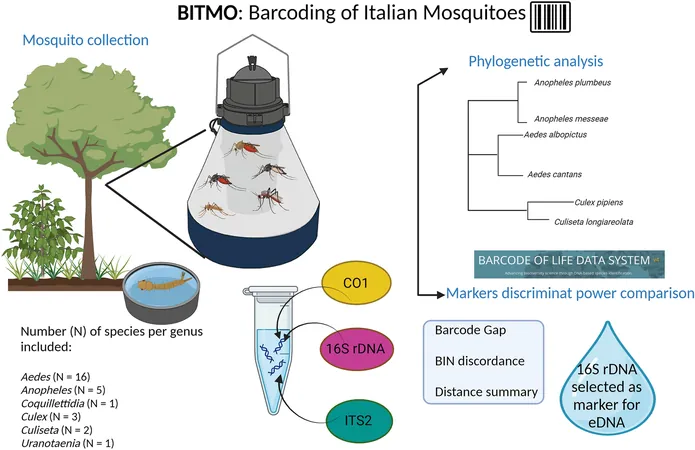
Breakthrough in Quantum Imaging: Researchers Find Way to Hide Images from Traditional Cameras!
2024-09-23
Breakthrough in Quantum Imaging: Researchers Find Way to Hide Images from Traditional Cameras!
What if we told you that images could be concealed in plain sight, invisible even to the most advanced camera systems? A groundbreaking team from the Paris Institute of Nanoscience at Sorbonne University has indeed achieved that remarkable feat through the innovative use of quantum optics.
Led by researcher Hugo Defienne, the team has crafted a novel technique that encodes images into the spatial correlations of entangled photon pairs—essentially linking particles of light in a manner that allows their spatial properties to remain highly correlated over vast distances.
Chloé Vernière, a Ph.D. candidate involved in the research, explains, "Entangled photons are essential for various applications, including quantum computing and cryptography. Understanding how to manipulate their spatial correlations is critical for meeting diverse technological needs."
Their experimentation centers on a process called spontaneous parametric down-conversion (SPDC), through which pairs of entangled photons are generated. This is achieved by directing a high-energy photon from a blue laser through a specially designed nonlinear crystal, causing the original photon to split into two distinct but correlated lower-energy photons.
In their experiments, an image is projected onto this nonlinear crystal in the path of the blue laser. A typical camera would capture the distinct image, but the moment the crystal is introduced, the standard imaging process is upended. Instead of image detection, the camera records only a uniform intensity, effectively rendering the original visual information invisible. The crucial detail here is that the image's data is transformed into the quantum correlations of the entangled photons, cleverly masking it from conventional detection methods.
To extract the concealed image, the researchers employed a single-photon sensitive camera complemented by advanced algorithms to track photon coincidences—moments when pairs of entangled photons arrive at the camera simultaneously. Through meticulous analysis of these coincidences, they successfully reconstructed the hidden image by examining the distribution of photon pairs.
Defienne elaborates on the intricacies, stating, "The image is effectively encoded in the spatial correlations of the photons. Attempts to view it through regular imaging methods will yield no results. However, by measuring how photons simultaneously arrive and how they are spatially arranged, the hidden imagery reveals itself. This breakthrough taps into quantum properties of light that conventional imaging has yet to exploit."
Vernièere highlights the transformative potential of this methodology, remarking, "The versatility and relative simplicity of our experimental design promise substantial practical applications. With further control over the properties of our laser and crystal setups, we could even encode multiple images within a single beam of entangled photons."
This pioneering technique does not merely stop at visual camouflage; it opens doors to secure quantum communication methods and imaging through challenging media such as fog or biological tissues, leveraging the robustness of quantum light compared to its classical counterparts.
In an era increasingly defined by privacy concerns and data security, such advancements could revolutionize how we think about digital imagery and communication. The implications are vast and abundant as researchers continue to push the boundaries of quantum science. Stay tuned—this is just the beginning of an exciting journey into the unseen realms of imaging technology!




 Brasil (PT)
Brasil (PT)
 Canada (EN)
Canada (EN)
 Chile (ES)
Chile (ES)
 España (ES)
España (ES)
 France (FR)
France (FR)
 Hong Kong (EN)
Hong Kong (EN)
 Italia (IT)
Italia (IT)
 日本 (JA)
日本 (JA)
 Magyarország (HU)
Magyarország (HU)
 Norge (NO)
Norge (NO)
 Polska (PL)
Polska (PL)
 Schweiz (DE)
Schweiz (DE)
 Singapore (EN)
Singapore (EN)
 Sverige (SV)
Sverige (SV)
 Suomi (FI)
Suomi (FI)
 Türkiye (TR)
Türkiye (TR)